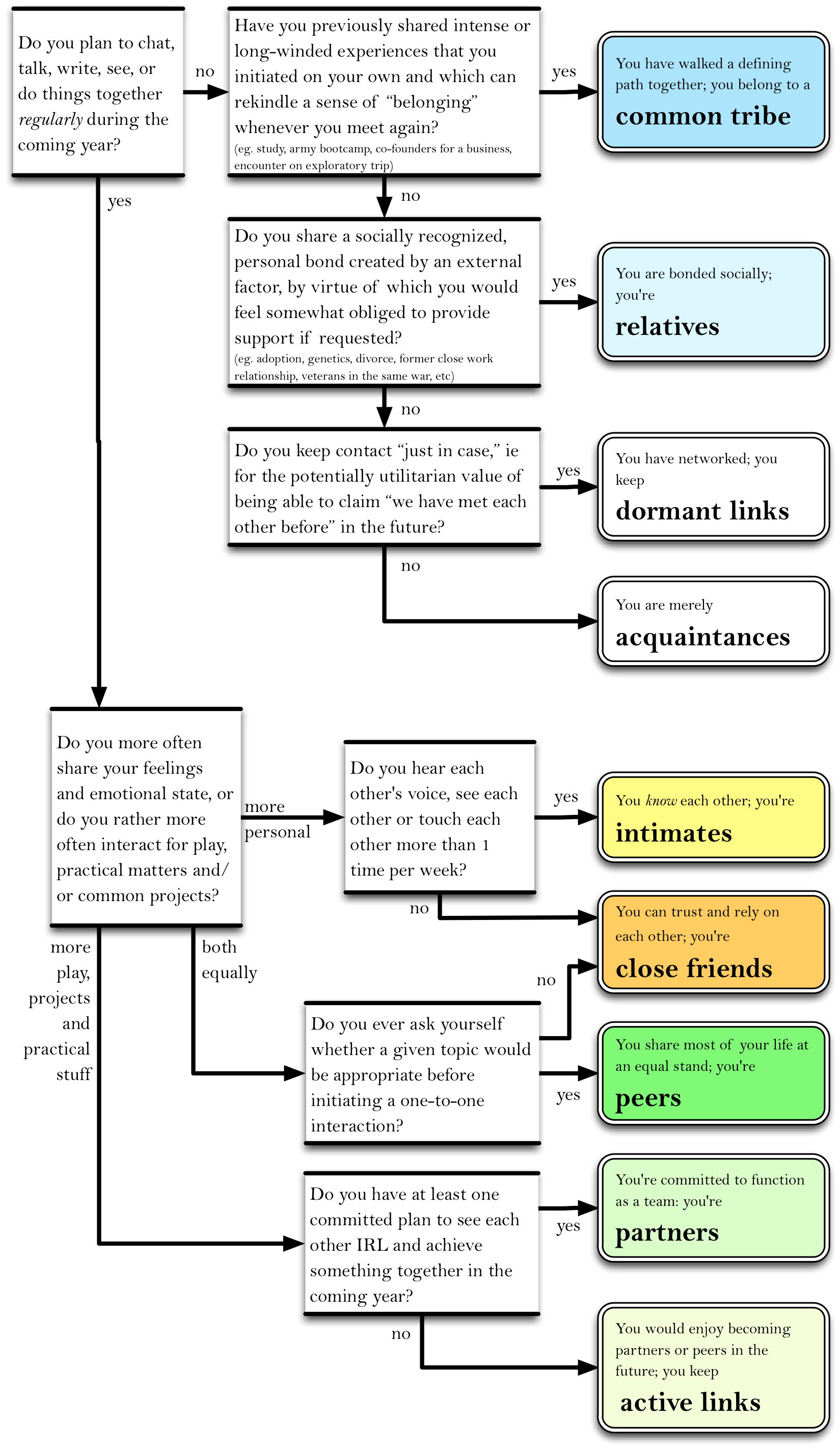Too many “friends”?
How to organize your contact list, 21st century-style.
Orkut, Hyves, Facebook, Google+… They all try it and fail.
Did you ever have to decide whether your best buddy at work should be labeled “Friends” or “Work”? Or whether your brother-soon-to-be-co-founder should be “Family” or “Work”? Or whether your best-friend-closer-than-your-brother should be “Friend” or rather “Family”?
Multiple labels, or the ability to place the same contact in multiple groups (like G+’s “circles”) don’t seem to work either: there are people you can’t seem to fit under the same label “family” or “friends,” as if you felt they don’t belong together.
The problem is that creating a distinction between “friends,” “family” and “work” reflects a perception of social dynamics that is outdated, and does not match the reality of social interactions in the 21st century. At least not between the digital natives, ie. more or less everyone born after 1980 or those interacting with them on a daily basis.
What Internet tools get wrong, most of the time, is what people do together and how often they do it is what matters most in social networks. Moreover, identifying activities most often diverges quite much from what one’s birth certificate or work contract would otherwise suggests.
Which implies that a more constructive and useful way to organize one’s contacts would look like this:
[caption id=”attachment_185” align=”aligncenter”
width=”604”]  This flowchart
suggests how to label contacts based on what they mean to you and how
often you see each other. Start with the top left corner and follow the
links.[/caption]
This flowchart
suggests how to label contacts based on what they mean to you and how
often you see each other. Start with the top left corner and follow the
links.[/caption]
This organizational flowchart exploits notions that are intuitively obvious to most younger people, and yet have only been studied relatively recently in sociology. It helps creating labels that are useful to find the right people upon initiating a conversation or activity, rather than simply achieving an unambiguous classification scheme.
For example, I would not know whether to look for “friends,” “family” or “colleagues” when organizing the barbecue next week-end; however I would look no further than “close friends” and “peers” in the diagram above. When looking to trim the number of “friends” in my contact list, I could simply cut out all the “acquaintances” in this labeling. When I make a new contact via an existing acquaintance, I may want to know where they stand together. Just knowing they are “family” does not tell me much; knowing whether they are “intimates” or “relatives” is more informative. And so on.
Of course, such labels are highly dynamic. Another issue with most technical tools is that they do not actively suggest to relabel contacts on a regular basis, whereas the nature and frequency of common activities do change with life events!
Further references: